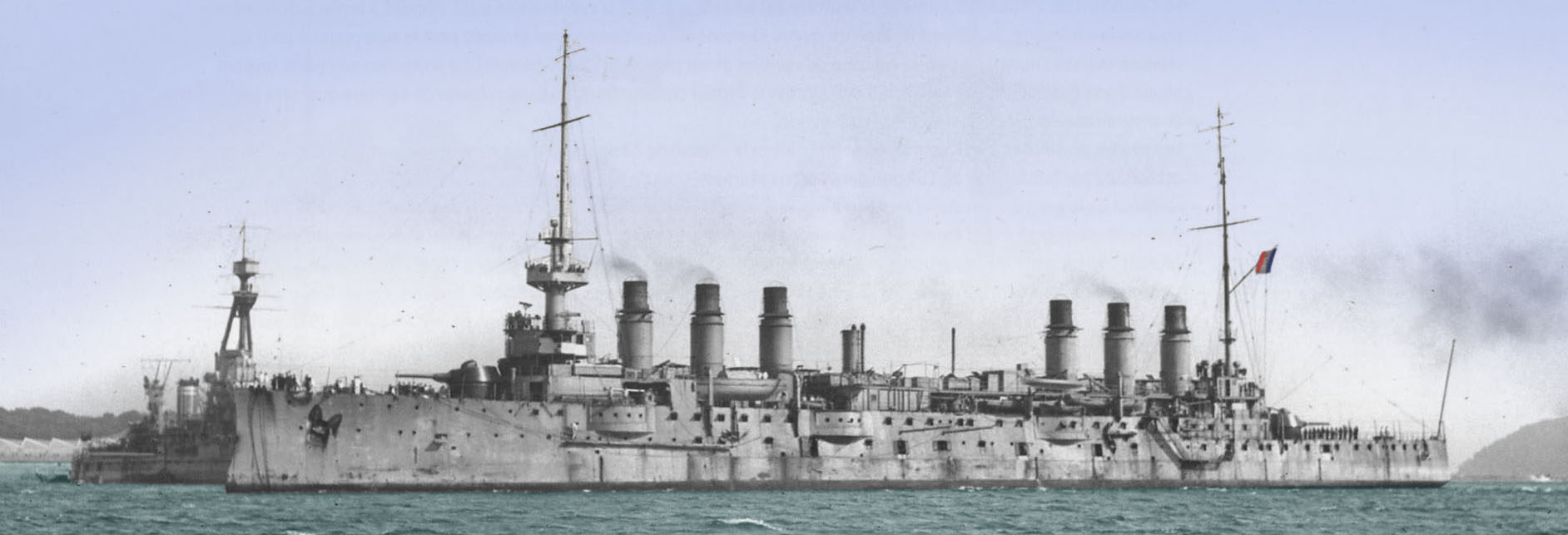
 Marine Nationale, 1896-1920
Marine Nationale, 1896-1920WW1 French Cruisers
Sfax | Tage | Amiral Cecille | D'Iberville class | Dunois class | Foudre | Davout | Suchet | Forbin class | Troude class | Alger class | Friant class | Linois class | Descartes class | D'Assas class | D’Entrecasteaux | Protet class | Guichen | Chateaurenault | Chateaurenault | D'Estrées class | Jurien de la Graviere | Lamotte-Picquet classDupuy de Lome | Amiral Charner class | Pothuau | Jeanne d'Arc | Gueydon class | Dupleix class | Gloire class | Gambetta class | Jules Michelet | Ernest Renan | Edgar Quinet class
The cruiser “Jeanne d’Arc” was the largest French cruiser in 1899, first oceangoing armoured cruiser and prototype for all following French armoured cruisers until 1907. Designed initially in 1892 as protected cruiser for overseas service, this was changed later and the design was modified by Engineer Emile Bertin as an armoured cruiser. Very different from previous armoured cruisers by this last minute change, she emphasised speed and range over protection, and was even considered woefully under-armed for her size. Not ideal for the fleet, she proved however roomy and adaptable to be transformed as a dedicated training vessel after WWI and until 1928, starting a long lineage and tradition in the Marine Nationale.
Development
Design & construction
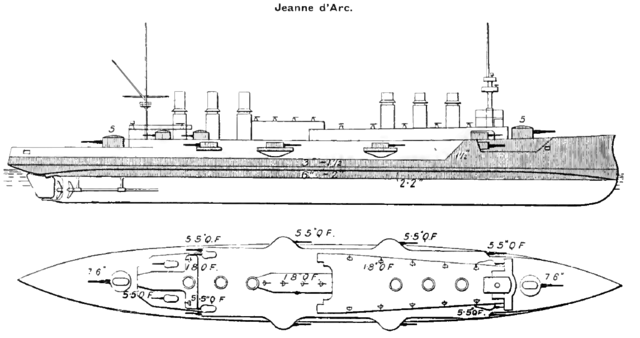
Jeanne d’Arc being designed in the 1890s was completely alien to the Dupuy de Lôme type armoured cruisers. This was basically a protected cruiser for overseas service, meeting requirement of range and speed that dictated some sacrifices, especially in protection.
Following a government change, with a new minister which privileged the home fleet, the design however was completely revised to be an armoured cruiser. Given the challenge and numerous recalculations to be done, notably in order to preserve stability, the task was given to superstar naval architect Emile Bertin, the director of the Navy’s Technical Section in 1895. He did his best, but still, his final design was regarded as unsuccessful: Too light for her armament, and the added armor lower her her designed speed considerably, meaning that for her size and cost she was not impressive for an armoured cruiser, especially in the light of foreign designs being built at the time: Her contemporaries were the Cressy class and Fürst Bismarck. Jeanne d’Arc was much larger but a bit slower and indeed less well armed and protected.
Trivia
The name “Jeanne d’Arc” (Joan of Arc) chosen, was correlated to French Republican Nationalism of the time. It was for the first time given to a cruiser, but she was not the first french vessel to bear the name:
There was before a French frigate of 1820, a 52-gun frigate (1820–1834) from Brest, flagship of the Caribbean squadron, another frigate launched 1837, 42-gun comm. in 1852 and until 1865 taking part in the Crimean War. She was renamed Prudente in 1865 and decommissioned in 1898, freeing the name for the new armoured cruiser. There was also an armoured corvette built in Cherbourg in 1876 and still active until 1885. After this 1899 armoured cruiser, there was a 1930 cruiser, and a 1960 helicopter cruiser, both solely designed and used for training.
Jeanne d’Arc is a popular figure both in and outside France. The “maiden of Orleans”, liberating the British-occupier city and succeedeing in having the prince Charles crowned Charles VII, king of France. However betrayed, captured before Paris, she was famously prosecuted by the hostile faction of the Bouguignon and burned to the stakes as a witch and relapse, later rehabilited and made a Saint in 1920 by the Roman Catholic Church. She is contributed to the end of the 100 years war but modern historians are wildly dicussing many details of her life and impact at the time, to this day, making her a somewhat controversial figure, and today instrumentalized by the right/far-right nationalist and conservative part of the Society.
Final redesign of FS Jeanne d’Arc
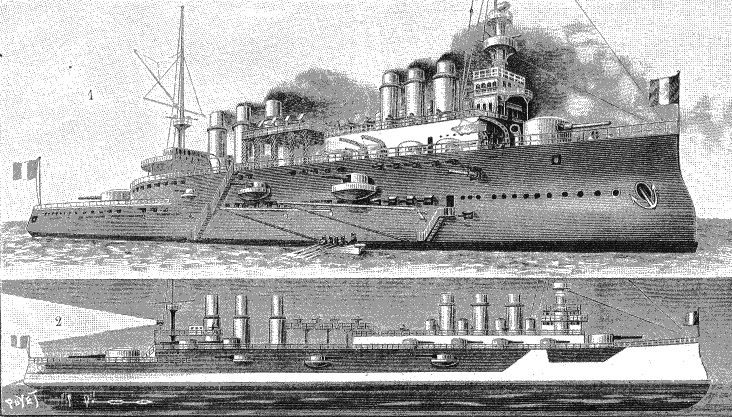
Hull and general design
The final cruiser measured 147 metres (482 ft 3 in) long overall (a record for any French Warship), with a beam of 19.42 metres (63 ft 9 in) and a maximum draught of 8 metres (26 ft 3 in). She displaced 11,264 tonnes (11,086 long tons) under normal load, but up to 14,000 fully loaded with extra coal for long cruises in wartime. She had a had a metacentric height of 1.458 metres (5 ft). Her crew was of 651 officers and ratings.
Design-wise, she could not have been more different than the previous armoured cruisers like the Pothuau, last of a line of armoured cruisers derived from the Dupuy de Lôme. They were low on water with an impressive ram bow and had a limited top speed, of 19 knots and often 16 in practice. Pothuau herself displaced 5,347 tonnes standard, whereas the Jeanne d’Arc was twice as heavy, longer by 35 meters, larger by three, draftier by two, with a much longer superstructure, a large tower bridge forward and military mast, plus its six unmistakable funnels in two rows of three. Thanks to 36 boilers (instead of 18) or a larger and more modern type, she tripled her output for a theoretical 22 knots, or even 23 as first planned by the yard.
But despite of all of this, she kept the same armament of two 7.6 in/40 main guns (19,3 cm) wheread Fürst Bismarck had four 9.4 in (24 cm) and the Cressy class had two 9.2 in guns.
She was one of the rare cruisers to have her whole forward section fully armoured, from the belt to the weather deck, down to the bridge tower. Unlike previous cruisers she was at first envisioned to ream the atlantic and her size was seen as advantage: Her tall prow, one deck taller, and very long hull were meant for her to ride the waves instead of ploughing heavily in foul weather as the previous armoured cruisers did.
Armour protection layout

Jeanne d’Arc was designed with Harvey Armor plating for her main Parts:
-Belt: 150 mm (5.9 in) thick amidships.
-Fwd belt to bow: 100 millimetres (3.9 in)
-Rear Belt to stern: 80 millimetres (3.1 in).
-Main Belt extension: 1.5 metres (4 ft 11 in) below, 0.7 metres (2 ft 4 in) above waterline
-Main belt, lower edge: 50 millimetres (2.0 in).
-Upper belt: 80 mm strake armour over 1.92 m (6 ft 4 in) amidships
-Upper belt upper edge: 40 millimetres (1.6 in).
-Bow sides, above belt: 3x 40 mm up to forecastle deck.
-Protective Deck, slope: 45-55 mm (1.8 to 2.2 in) in mild steel +2×10 mm (0.4 in) “extra-mild” steel.
-Upper Deck: 11+7mm (0.4+0.3 in).
-Conning tower walls: 138 millimetres.
-Main turret plating: Krupp armour, 161 mm (6.3 in) on 2×11 mm plating
-Main turret roof: 20 millimetres (0.8 in)+10mm plating.
-Main Barbette 160 millimetres (6.3 in) thick
-Main barbette, below upper deck: 60 millimetres (2.4 in)
-Gun shields, secondary battery: 74 millimetres (2.9 in)
-Sponsons, secondary battery: 40 mm plating, hinged.
-ASW prot. 15 watertight bulkhead up to main armored deck, double bottom
Powerplant
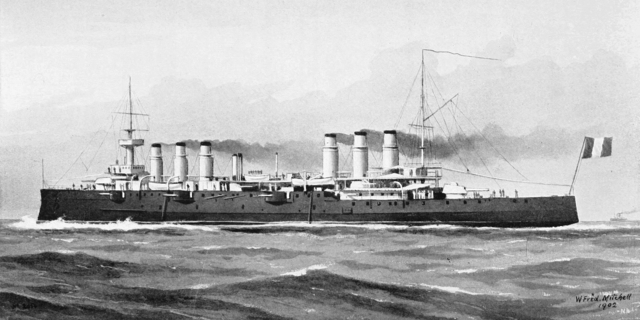
Jeanne d’Arc had a momunmental powerplant, the largest ever placed on a French warship at the time. It consisted in three single three-bladed propellers, instead of two like on the Admiral Charner, driven by 3 four-cylinder vertical triple-expansion steam engines. These propellers were not all the same; Both outer propellers were meant for speed and 5-metre (16 ft 5 in) in diameter, while the centre one was smaller at 4.7 metres (15 ft 5 in), for cruise.
Steam came by no less than 36 Guyot-du Temple boilers, the largest ever fit, which altogether produced a total output of 28,500 indicated horsepower (21,300 kW; 28,900 PS) or even 33,000 shp in forced heat as designed (Conways). Jeanne d’Arc however failed to reach her designed speed of 23 knots (43 km/h; 26 mph). During her sea trials; on 23 January 1903, the best she managed was 21.7 knots (40.2 km/h; 25.0 mph), based on 29,691 ihp (22,141 kW; 30,103 PS), so less also than planned.
She carried however far more coal than previous cruisers (abour 600 tonnes), from 1,970 tonnes and up to 2,100 tonnes (2,067 long tons). This produced a range of 13,500 nautical miles (25,000 km; 15,500 mi) at 10 knots which was intended for her initial commerce raiding career. Bertin was tasked to improve her speed, and dedcided after the trials to replace her propellers and their struts. He also redesigned her her bilge keels, shortened, but new trials did not showned the awaited improvement, with around 21.8 knots reached. This was not that bad compared to her rivals, the Cressy reached 21 knots, and Fürst Bismarck 18.7 kts. However she was not a good steamer, with excessive coal consumption and poor agility, with a 2000 m tactical diameter.
Armament
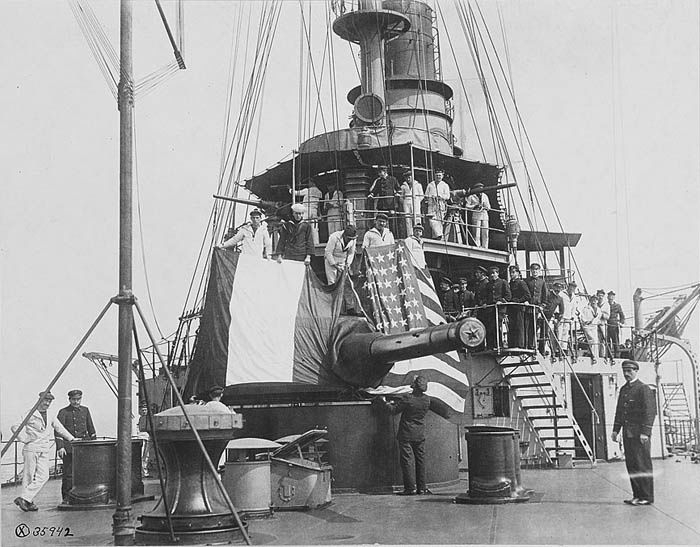
Main Battery
Jeanne d’Arc’s main armament was the same since FS Dupuy de Lôme: Two 40-calibre 194 mm (7.6 in) Modèle 1893 guns in single-gun turrets fore and aft of the superstructure. Due to her particular design, they were further from the sterna and prow, higher up, so as not to be affected by bad weather. Each fired a 75–90.3-kilogram (165–199 lb) shell at 770 to 800 metres per second (2,500 to 2,600 ft/s) depending of the ammunition. Elevation was between -6° and +15°, rate of fire 2 rpm and range was below 16,000 meters (useful). Built with with several layers of steel reinforcing hoops, interrupted screw breech, they fired separate loading bagged charges and projectiles. They were also shared by Jeanne D’Arc derivatives, the Gloire, Gueydon and Léon Gambetta class cruisers, all in the same configuration.
Secondary Battery
Jeann d’Arc secondary armament comprised fourteen 138.6 mm/45 (5.5 in) Modèle 1893 guns, all in single mounts and protected by gun shields along the sides. Four were in each broadside, positioned in hull sponsons for maximum traversen while the remaining guns were on the sides of the superstructure, with a more limited traverse. They fired 30–35-kilogram (66–77 lb) shells at around 730-770 metres per second (2,400 to 2,500 ft/s) depending of the type. The breech was of the interrupter crew type, with a separate-loading, cased charge, their rate of fire was also 4 rpm and range (maximum) was 15,000 m (16,000 yd) at 25°. This armament was twice as much as previous armoured cruisers: Charner had only six. This at least compensated for her weak main armament.
Anti-Torpedo Boat Armament
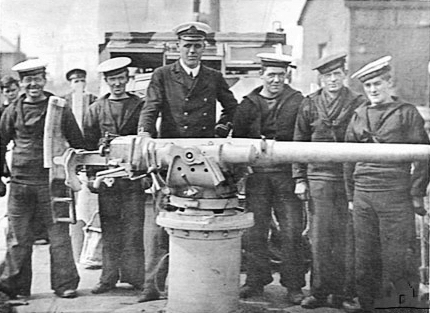
The close-range anti-torpedo boat defense as not forgotten: She carried sixteen QF 47-millimetre Hotchkiss (1.9 in)/40 Modèle 1885. Four were in the fighting top on the forward military mast, the others along the superstructure. By contrast, previous cruisers were armed with only four of them completed by eight 37 mm (1.5 in) 5-barreled revolver guns. So in this department also, this was quite a potent defence, much superior.
Torpedo Tubes
Like all previous cruisers, the usual practice was to add torpedo tubes, in that case two submerged 450-millimetre (17.7 in) torpedo tubes in the broadside, with reloads. They carried indeed in total six Modèle 1892 torpedoes, each carrying a 75-kilogram (165 lb) warhead at 800 metres (870 yd) and unique setting of 27.5 knots (50.9 km/h; 31.6 mph).


Author’s illustrations: Jeanne d’Arc as completed and in WWI.
⚙ Jeanne d’Arc specifications as built |
|
| Displacement | 11,445 tonnes (11,264 long tons) standard |
| Dimensions | 147 x 19.42 x 9 m (482 x 64 x 26ft) |
| Propulsion | 3 Shafts TE steam engines, 36 wt boilers: 28,500 ihp (21,300 kW) |
| Speed | 21 knots (39 km/h; 24 mph) |
| Range | 13,500 nmi (25,000 km; 15,500 mi) at 10 knots |
| Armament | 2× 194 mm (7.6 in), 14× 138.6 mm (5.5 in), 16× 47 mm (1.9 in), 2× 450 mm (17.7 in) TTs |
| Protection | Belt 150, Deck 55, Gun turrets 161, Barbettes 140, CT 138 mm |
| Crew | 651 |
Jeanne d’Arc Carrer

Her start was very troubelsome: Planned in 1892 as a large protected cruiser to prey on trade routes as planned by the Young School, after a government change she became an armoured cruisers and Bertin managed to up-armor her. She was at last ordered on 28 December 1895, from Arsenal de Toulon. She was laid down in October 1896. Construction was slow and prolonged, almost brought to a standstill from September 1896 to June 1898. This was the result of a dispute between the constructor and naval administration, as well as disagrements about her engines, and multiple delays. In the end, she was only launched on 8 June 1899, and without her engines installed to press forward.
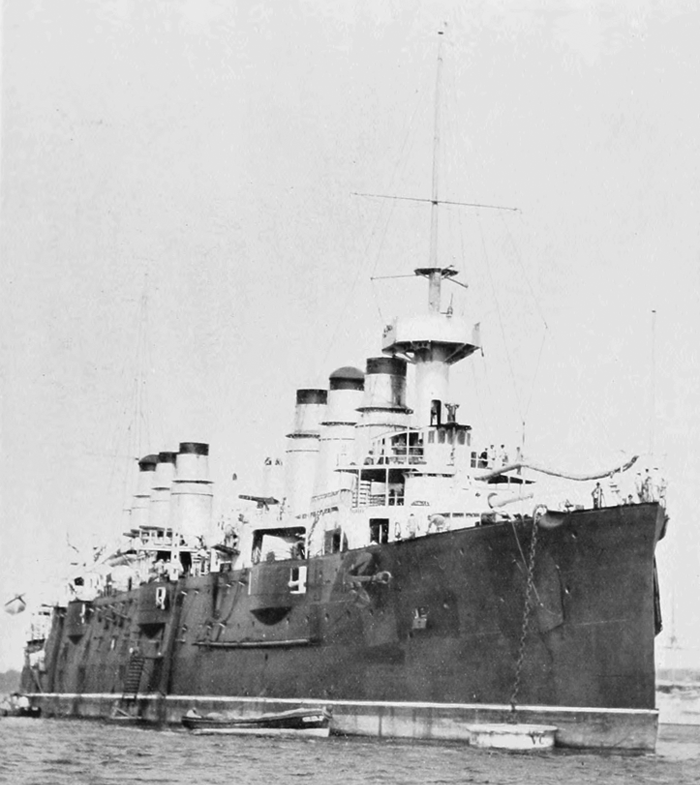
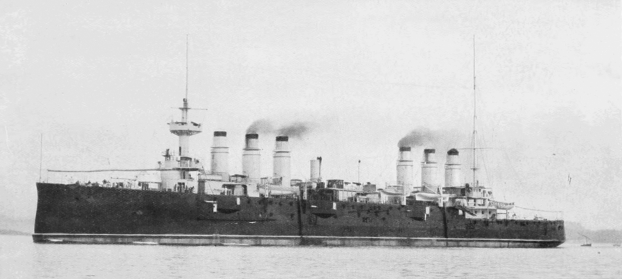
Jeanne d’Arc depicted in a specialized magazine in 1902
A troublesome early career
At last she received her intended boilers (not from the Yard, which was the usual practice at the time) and she was commissioned for sea trials on 1 March 1901. But her troubles were not over. It was revealed indeed the boiler rooms were very poorly ventilated, in addition to the boilers being very poorly insulated so that the temperature inside rose to 65 °C (149 °F), making all work impossible at high consumption rates. That heat brought countless indesirabke side effects, like the feed pumps failing repeteadly due to beyonf boiling hot feed water, managing to overheat in turn the condensers. This led to many modifications until March 1902, so that trials be resumed in next April.
There, heat problems were cured, but new problems appeared, this time with the piston rings, not in one, but all three engines. Further modifications and parts replacements, she was finally commissioned on 10 March 1903, even before her final trials took place. The whole process took since her keel laying seven years, and all this time, technology went forward; She was no obsolete however by any standards and at the contrary a great leap forward comparted to all previous armoured cruisers.
On 14 April, Jeanne d’Arc, considered very much a prestige vessel at this point, ferried President Émile Loubet to French North Africa, and back in Marseilles on the 29th of April. The cruiser was sent for her first atlantic trials, reassigned to the Northern Squadron in Brest. After all this was her intended theater of operation. On 1 June she took part in exercises off the coast of Brittany which lasted for several months.
However still, she was regularly plagued by boiler problems and overheating, and capped to a much slower speed as intended. This was so bad she was eventually reduced to reserve on 14 September, refitted and started new trials on 8 October, again reported unsuccessful. The admiralty ordered her to be decommissioned for full repairs on 15 November. Again, her troublesome machinery went through a complete overhaul. She was notably given 48 Normand-Sigaudy boilers in replacement. At last she was recommissioned for new trials, more successful in May 1905, but returned in reserve on 6 August.
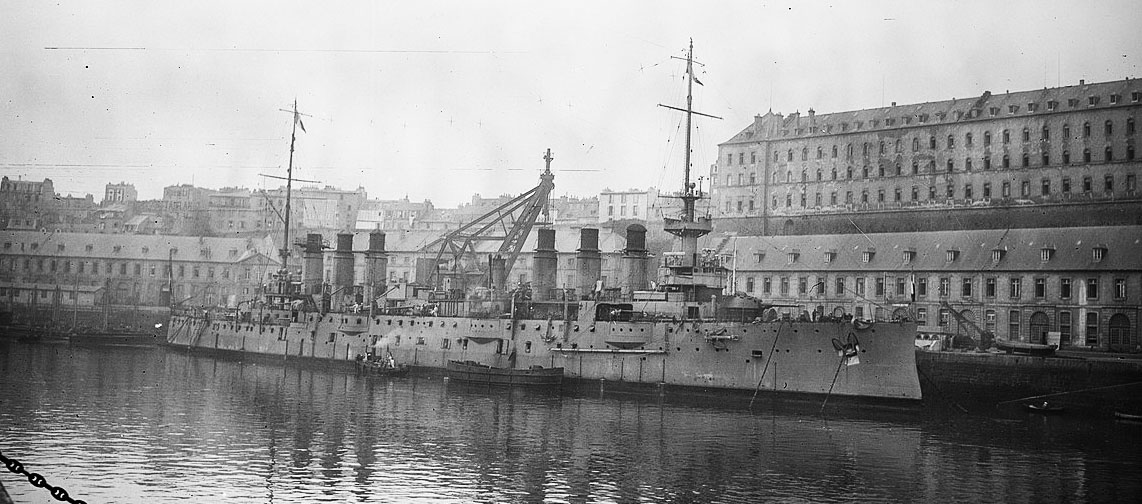
Jeanne d’Arc in Brest, Britanny, 1905
On 26 May 1906 Captain Émile Guépratte (future admiral in WWI) assumed command and she was reassigned to the Mediterranean Fleet, as flagship of the Light Squadron. She visited Tangiers in Morocco, and Gibraltar, and proceeded to the large scale annual exercizes with fleet on 12-28 July. She later took part in a fleet review for the inauguration of the Rove canal tunnel connecting Marseilles to the Rhône River, assisted by President Armand Fallières in Marseilles, on 16 September.
In October 1906, Jeanne d’Arc visited Bizerta, Tunisia. In 1907, she visited Morocco, Algeria and Cherbourg on her way for a drydoc refit in Brest in June 1907, back to the Mediteranean Sqn. on 20 July. While in transit, just departing Gibraltar on 12 February 1908, one of her boiler exploded. The accident killed five, injured three more, badly burned. She returned in Brest to be placed in reserve on 15 April. This time, the admiralty had new plans for the capricious cruiser. Her numerous engines problems lead to unsufficient speed for her intended role but her large hull presented many advantages.
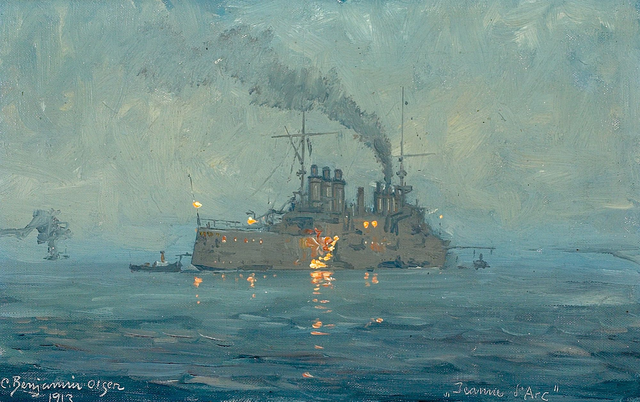
Christian Benjamin Olsen, Jeanne d’Arc, 1913
They ordered modifications to make her suitable as a training ship for naval cadets. After adding new accomodations in 1908-1910, and interior modifications, she was recommissioned on 20 May 1911.
It seems her armament was unchanged. She was attached to the Third Division, Reserve Squadron, until 1 May 1912 and prepared for long cruises. Next she was reassigned to the Atlantic Schools Division, with Brest as new home port. This was the start of a lengthy cruise in the Atlantic, Mediterranean and Baltic, from 10 October 1912 to 29 July 1913. She went to the Mediterranean and crossed the Zuez canal for her first visit to the Indian Ocean in her second cruise (10 October 1913-27 July 1914). When back, as war was looming and the admiralty wanted to convert her back to her role of cruiser, her boilers were replaced again, this time by 36 Guyot de Temple (28,000hp), and she received in addition six 37mm/20 QF guns.
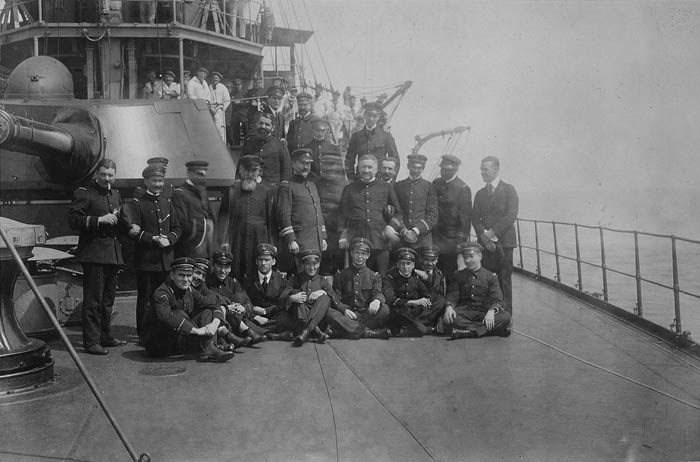
Jeanne d’Arc at Annapolis, Maryland during her prewar cruise, with French officers on deck
Jeanne d’Arc WWI
The war has broken when she was done with her last modifications: She was assigned to Northern Squadron on 1 August, 1st Division, 2nd Light Squadron as flagship. Her first missions were to patrol the western English Channel, looking for German blockade runners. When reinforcements were needed in the Eastern Mediterranean with the start of the Dardanelles Campaign by February 1947, the admiralty wanted her reassigned to the Third Squadron, arriving in March.
Her first mission was to escort a troop convoy to Mudros and later in April, she covered French diversionary landings on the east (Anatolian) coast. Diverting attention for the main landings on the Gallipoli Peninsula, western side. During these operations close to the shore she was targeted by Ottoman artilley and hit twice by 6-in shells, on 26 April. Damage was light: She had a sponson hit, small fire started, mastered, some wounded crewmen, and a dud, tossed overboard.
Reassigned as flagship of the Third Squadron, she housed not one but three Vice-Admirals: Louis Dartige du Fournet, Dominique-Marie Gauchet, and Frederic Moreau, until 30 March 1916. She served as a HQ thanks to her roomy accomodations, based in Port Said, Egypt. There, she became the base for the French operations to blockade the Levantine and Aegean coasts, occupied by Turkey. Next she was deployed to cover landings on Ruad Island, on 30–31 August 1915. Later she covered the landings at Castellorizo, on 28 December. She shelled central Empires tarhets of upportunity, batteries and positons held by either Turkish or German troops and bombarded the German consulates in Alexandretta and Caiffa.
She was sent for a short refit and maintenance in Malta in October 1915 and returned to the Levant front, until March 1916, witthdrawn and sent back home for a comprehensive refit in France. She emerged from the drydock in January 1917, reassigned to the 4th Light Squadron operating in the West Indies (French Carribean). In late 1918 she returned to France, placed in reserve with a nucleus crew for peacetime.
Interwar career
In 1919, a commission examined her general state, and reported it was good enough for more service, after a refit. She had all her previous accomodations back to house many cadets and their instructors. She was recommissioned in her former role of training cruiser by August 1919. For ten years, until 1929, she made nine “world-spanning cruises” from her home port of Brest, usually departing by September or October, and back in July the next year. For her very last cruise in 1927–1928, Jeanne d’Arc was commanded by no ther than François Darlan. She was replaced in her role by the prewar armoured cruiser, but more modern Edgar Quinet, and the venerable “Jeanne” joined the reserve. She even became briefly “Jeanne d’Arc II” in 1930 as the brand new 1930 cruiser needed her name. This purpose-built training cruiser was the first. The former “Jeanne” was stricken on 15 February 1933, condemned on 21 March, sold for BU on 9 July 1934.
Read More
Books
Conway’s All the World’s Fighting Ships 1860–1905.
Feron, Luc (2018). “The Armoured Cruiser Jeanne d’Arc”. In Jordan, John (ed.). Warship 2018. Osprey.
Friedman, Norman (2011). Naval Weapons of World War One: Guns, Torpedoes, Mines and ASW Weapons of All Nations. Seaforth.
Jordan, John & Caresse, Philippe (2019). French Armoured Cruisers 1887–1932. Seaforth.
Silverstone, Paul H. (1984). Directory of the World’s Capital Ships. NY Hippocrene Books
Links
http://ecole.nav.traditions.free.fr/jeannedarc_19121928.htm
http://www.anciensmarinsjeannedarc.infini.fr/spip.php?rubrique4
https://en.wikipedia.org/wiki/French_cruiser_Jeanne_d%27Arc_(1899)
https://memorial-national-des-marins.fr/d/3586-jeanne-d-arc
http://www.navypedia.org/ships/france/fr_cr_jeanne_darc.htm
Model Kits
The only one known to me: The Kombrig 1:700 kit.

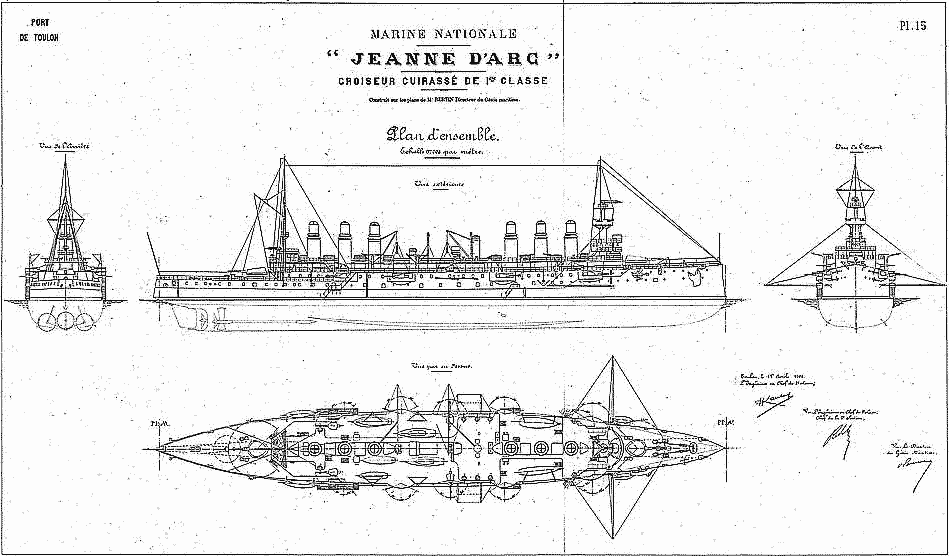

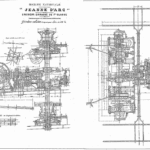
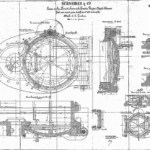
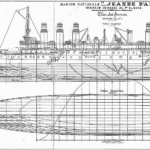
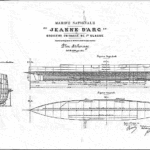
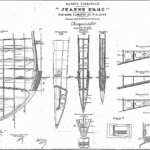
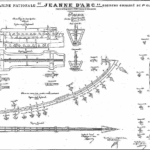
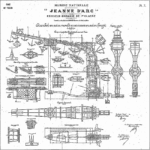
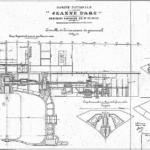
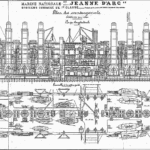
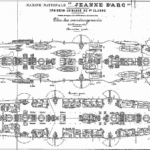
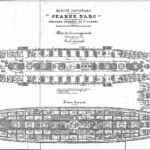


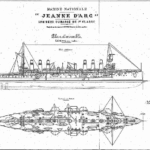
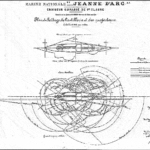
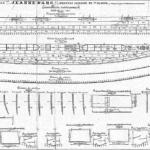
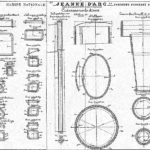
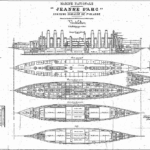

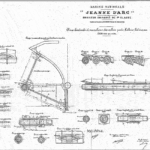
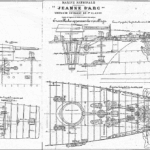
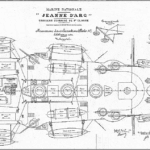
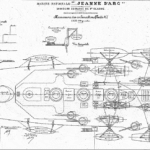

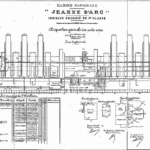

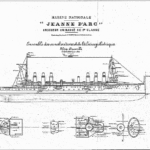
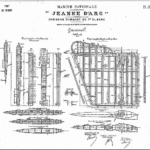
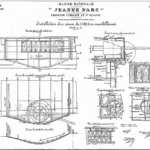
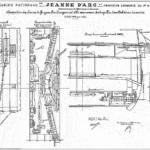
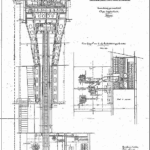
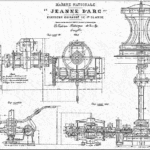
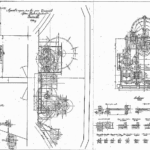

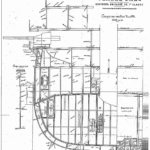
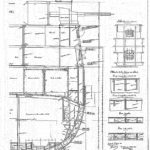
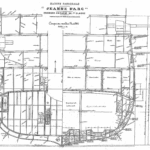
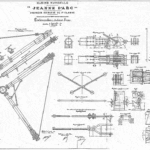
 Latest Facebook Entry -
Latest Facebook Entry -  X(Tweeter) Naval Encyclopedia's deck archive
X(Tweeter) Naval Encyclopedia's deck archive Instagram (@navalencyc)
Instagram (@navalencyc)





 French Navy
French Navy Royal Navy
Royal Navy Russian Navy
Russian Navy Armada Espanola
Armada Espanola Austrian Navy
Austrian Navy K.u.K. Kriegsmarine
K.u.K. Kriegsmarine Dansk Marine
Dansk Marine Nautiko Hellenon
Nautiko Hellenon Koninklije Marine 1870
Koninklije Marine 1870 Marinha do Brasil
Marinha do Brasil Osmanlı Donanması
Osmanlı Donanması Marina Do Peru
Marina Do Peru Marinha do Portugal
Marinha do Portugal Regia Marina 1870
Regia Marina 1870 Nihhon Kaigun 1870
Nihhon Kaigun 1870 Preußische Marine 1870
Preußische Marine 1870 Russkiy Flot 1870
Russkiy Flot 1870 Svenska marinen
Svenska marinen Søværnet
Søværnet Union Navy
Union Navy Confederate Navy
Confederate Navy Armada de Argentina
Armada de Argentina Imperial Chinese Navy
Imperial Chinese Navy Marinha do Portugal
Marinha do Portugal Mexico
Mexico Kaiserliche Marine
Kaiserliche Marine 1898 US Navy
1898 US Navy Sovietskiy Flot
Sovietskiy Flot Royal Canadian Navy
Royal Canadian Navy Royal Australian Navy
Royal Australian Navy RNZN Fleet
RNZN Fleet Chinese Navy 1937
Chinese Navy 1937 Kriegsmarine
Kriegsmarine Chilean Navy
Chilean Navy Danish Navy
Danish Navy Finnish Navy
Finnish Navy Hellenic Navy
Hellenic Navy Polish Navy
Polish Navy Romanian Navy
Romanian Navy Turkish Navy
Turkish Navy Royal Yugoslav Navy
Royal Yugoslav Navy Royal Thai Navy
Royal Thai Navy Minor Navies
Minor Navies Albania
Albania Austria
Austria Belgium
Belgium Columbia
Columbia Costa Rica
Costa Rica Cuba
Cuba Czechoslovakia
Czechoslovakia Dominican Republic
Dominican Republic Haiti
Haiti Hungary
Hungary Honduras
Honduras Estonia
Estonia Iceland
Iceland Eire
Eire Equador
Equador Iran
Iran Iraq
Iraq Latvia
Latvia Liberia
Liberia Lithuania
Lithuania Mandchukuo
Mandchukuo Morocco
Morocco Nicaragua
Nicaragua Persia
Persia San Salvador
San Salvador Sarawak
Sarawak Uruguay
Uruguay Venezuela
Venezuela Zanzibar
Zanzibar Warsaw Pact Navies
Warsaw Pact Navies Bulgaria
Bulgaria Hungary
Hungary

 Bundesmarine
Bundesmarine Dutch Navy
Dutch Navy Hellenic Navy
Hellenic Navy Marina Militare
Marina Militare Yugoslav Navy
Yugoslav Navy Chinese Navy
Chinese Navy Indian Navy
Indian Navy Indonesian Navy
Indonesian Navy JMSDF
JMSDF North Korean Navy
North Korean Navy Pakistani Navy
Pakistani Navy Philippines Navy
Philippines Navy ROKN
ROKN Rep. of Singapore Navy
Rep. of Singapore Navy Taiwanese Navy
Taiwanese Navy IDF Navy
IDF Navy Saudi Navy
Saudi Navy Royal New Zealand Navy
Royal New Zealand Navy Egyptian Navy
Egyptian Navy South African Navy
South African Navy






























 Ukrainian Navy
Ukrainian Navy dbodesign
dbodesign
Hello, I have a photograph of a 6 funnelled with the distinctive funnel caps, of this armoured cruiser, in Cape Town harbour 1914/15? under the shadows of table mountain. However the reported location of the Jeanne d’Arc during WW1 shows she never visited Cape Town, South Africa.
The recognition silhouette are fairly distinctive for all the 6 funnelled French vessels and so far I have not Blue on Blued.
The vessel being festoon with (Dhobi) washing, 126plus hammocks on the Stb side, and various shirts.
Does indicate a cadet training ship, with poor A/C and bunkering Coal.
Your thoughts on what this could be?
Outstanding web site by the way, Hours of fun.
Hy Bydand, thx, you can send it via the contact below or [email protected]
It’s not surprising she went to the Cape, she made several world cruises in the interwar.
Cheers,